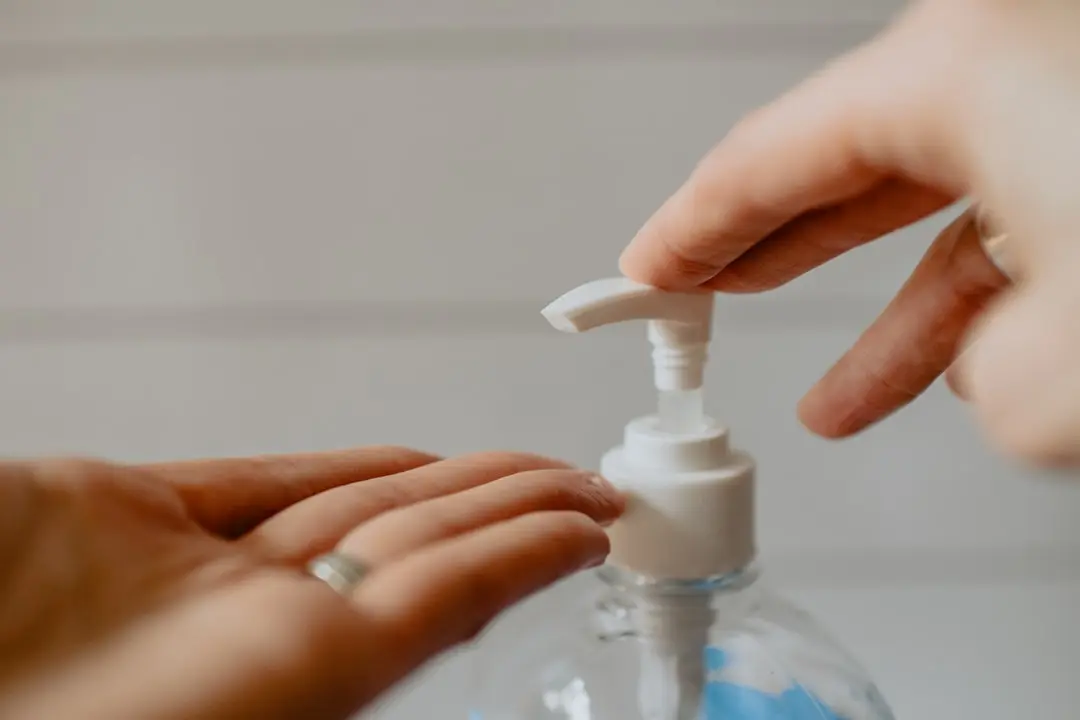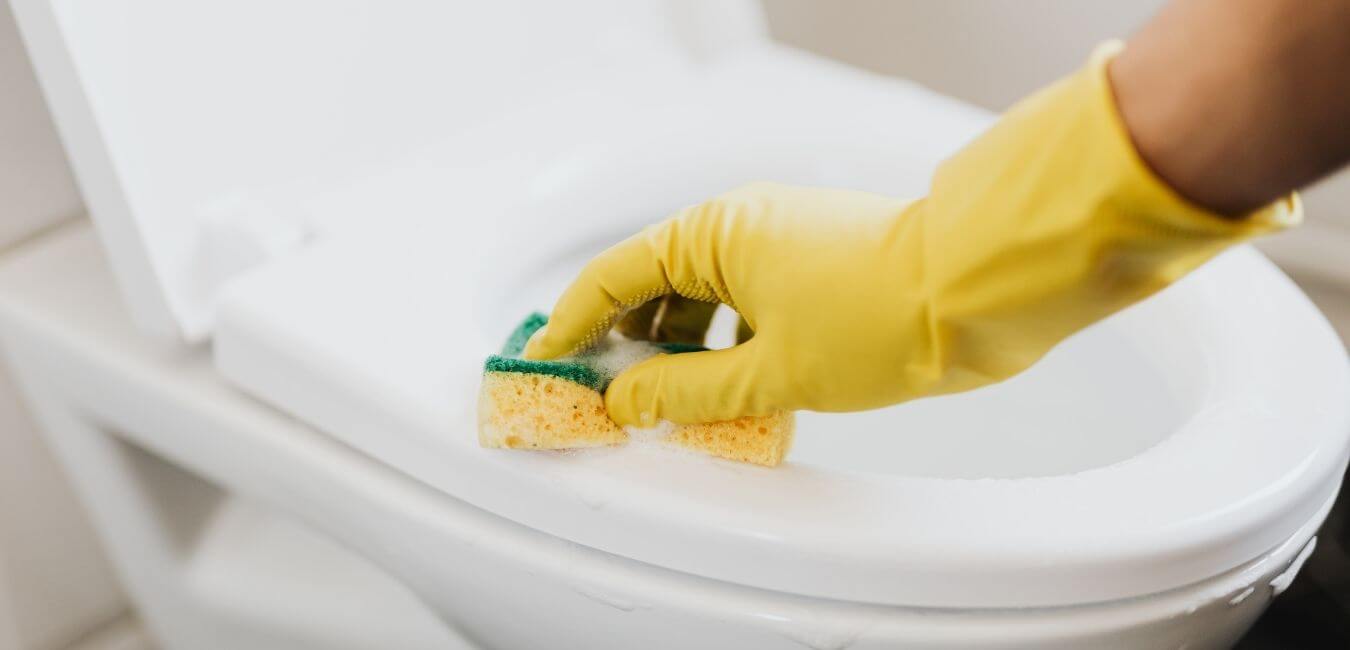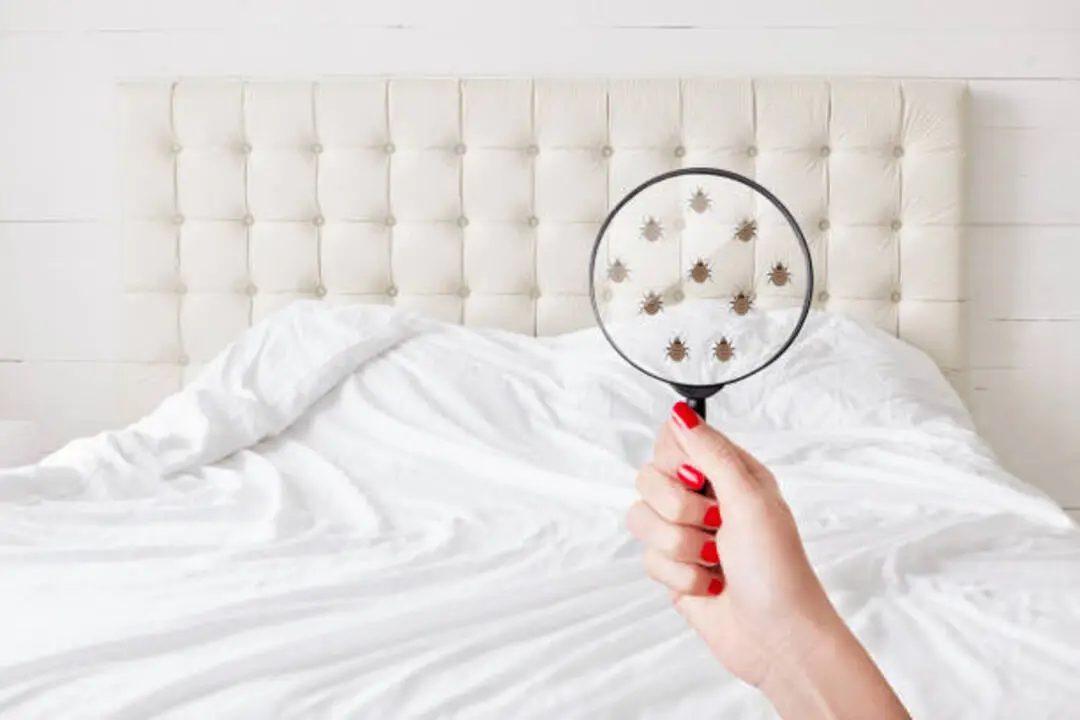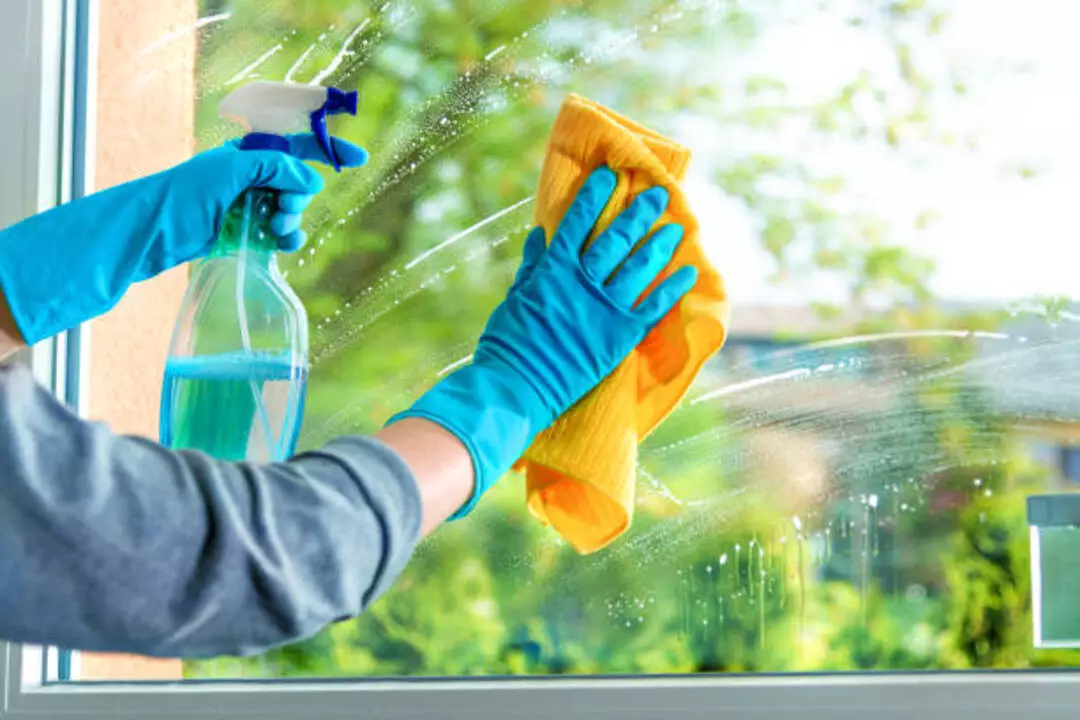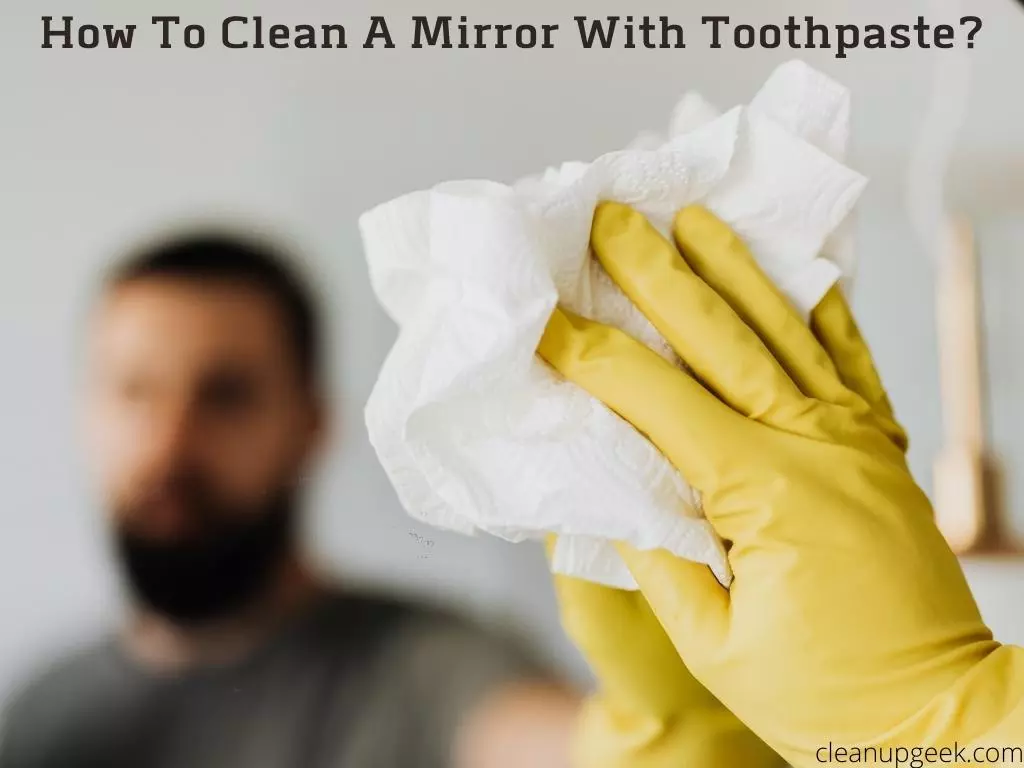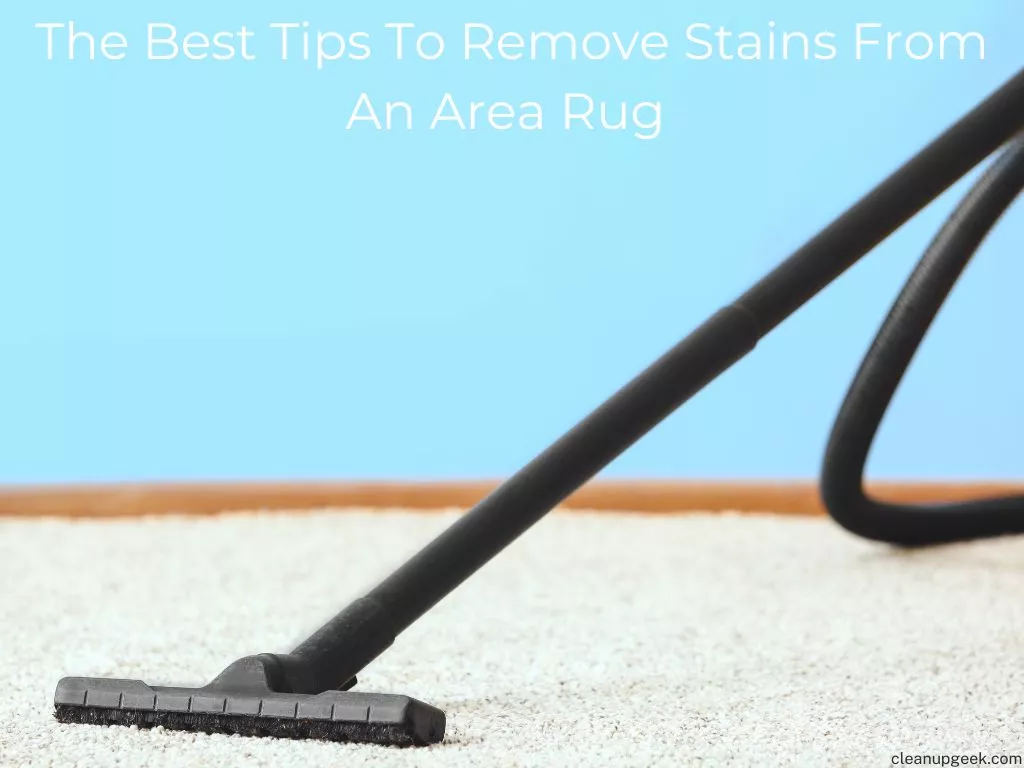Do you ever feel like keeping your house clean is an impossible task? Like no matter how hard you try, the clutter just keeps piling up and the dust never seems to go away?
Well, imagine trying to do all of that with attention deficit hyperactivity disorder (ADHD) constantly pulling you in a million different directions. Sounds overwhelming, doesn’t it?
But fear not! With a little bit of know-how and some clever organization tips, keeping your house clean with ADHD can be a breeze. Whether you’re living alone or have a family to take care of, these 23 tips will help you stay on top of the mess and reclaim your home as a peaceful sanctuary.
So let’s dive in and discover how you can keep your space tidy without sacrificing your freedom and creativity.
Check This Article: How To Clean Your House When Depressed
Strategies to Keep Your House Clean If You Are Living with ADHD
Below are some of the tips I found useful and helpful if you want to keep your house clean while living with ADHD:
1. Understanding ADHD And Its Impact On Cleaning
Living with ADHD can be challenging, especially when it comes to keeping your home clean. Individuals with ADHD often face difficulties in brain function, attention challenges, and time management. This makes it harder for them to stay focused on cleaning tasks and complete them within a reasonable timeframe.
Moreover, emotional regulation can also come into play when trying to clean the house. People with ADHD may become easily frustrated or overwhelmed when faced with clutter or messiness.
Executive dysfunction is another aspect that contributes to this difficulty as it causes individuals to struggle with planning and organizing their tasks effectively.
However, understanding how ADHD affects one’s cleaning habits is the first step towards finding solutions that work for them.
By acknowledging these challenges, individuals can take proactive steps to create a more organized living space that suits their needs. One way of doing this is by creating a cleaning schedule that breaks down tasks into manageable chunks of time.
2. Create A Cleaning Schedule

Now that we understand how ADHD can impact cleaning, let’s talk about creating a cleaning schedule.
One idiom that comes to mind is ‘divide and conquer.’ By breaking up the cleaning tasks into manageable chunks and spreading them out over time, it can feel less overwhelming.
When creating a cleaning schedule, consider whether you want to tackle certain tasks daily or weekly. For example, wiping down kitchen counters and doing a load of laundry might be best done on a daily basis, while vacuuming and dusting can be done weekly. It’s important to find a balance that works for you and your lifestyle.
If you live with roommates or have children, it can be helpful to involve them in the cleaning process. You could assign specific tasks to each person or rotate responsibilities each week.
Also, when adapting your cleaning schedule for different living spaces (such as a larger house versus a smaller apartment), be flexible in adjusting the frequency of certain tasks as needed.
By working together and being adaptable, maintaining a clean home can become more achievable.
To prioritize cleaning tasks, start by identifying what areas need attention most urgently. Is there clutter that needs to be cleared before deep cleaning? Are there any surfaces that require sanitizing due to illness or exposure? Make sure to address these higher-priority tasks first before moving on to others.
This approach not only helps maintain cleanliness but also gives you a sense of accomplishment as you complete each task.
3. Prioritize Cleaning Tasks
One of the biggest challenges for people with ADHD is managing their time effectively. This can make it difficult to stay on top of cleaning tasks around the house. But don’t worry, there are ways to make it easier.
First, try using some cleaning hacks to save time and energy. For example, keep a small bin or basket in each room for items that need to be put away later. This can help prevent clutter from building up and make it easier to tidy up quickly.
Another helpful strategy is establishing routines and sticking to them as much as possible. Having a set time each day or week dedicated to cleaning can help you stay organized and on track. You could also try breaking down larger tasks into smaller ones that are more manageable.
Managing distractions is also important when trying to keep your house clean with ADHD. Try turning off your phone or other devices while you clean, or listening to music without lyrics to help you focus. Creating a dedicated workspace where you can focus on cleaning without interruptions can also be helpful.
By creating a cleaning plan that incorporates these strategies, you’ll be well on your way to keeping your home tidy and organized despite the challenges of ADHD.
In the next section, we’ll explore how breaking tasks into smaller steps can make cleaning feel less overwhelming and more achievable.
4. Break Tasks Into Smaller tasks
Transition: Just like how a puzzle is solved piece by piece, cleaning tasks should be broken down into smaller steps to ensure that the job gets done efficiently. This approach helps you avoid feeling overwhelmed and helps keep your mind focused on the task at hand.
When it comes to keeping your house clean with ADHD, task prioritization, time management, goal setting, attention management, and productivity strategies are crucial. Breaking down cleaning tasks into smaller steps is one of the most effective ways to manage these responsibilities.
Here are three things you can do to make it easier:
- Start with the easiest tasks – This will help build momentum and give you a sense of accomplishment as you move on to more challenging ones.
- Set a timer – Working in short bursts of focused energy can help improve your productivity and prevent burnout.
- Celebrate progress – Take a moment to appreciate what you’ve accomplished so far, no matter how small it may seem.
By breaking down cleaning tasks into smaller steps, you can take control of your environment and manage your ADHD symptoms more effectively.
Visual reminders are another helpful tool in managing cleaning tasks with ADHD. By using reminders like checklists or sticky notes, you can stay organized and keep track of what needs to be done. These visual cues serve as a reminder not only of what needs to be done but also of why it’s important.
With ADHD, it’s easy for cleaning tasks to fall by the wayside amidst other distractions. However, by breaking them down into manageable chunks and using visual aids like reminders, you can take control and achieve success in keeping your house clean.
Remember that every small step counts towards achieving your goals – so keep pushing forward!
5. Use Visual Reminders

One of the biggest challenges for people with ADHD is forgetfulness, which can lead to disorder and clutter in the house. Visual reminders are a great way to keep your home clean and organized. Here are some practical tips that you can try:
Firstly, use color-coded reminders. Assign a specific color for each task or area in your house. For example, green for cleaning the kitchen, blue for laundry, and yellow for vacuuming. This will help you remember what needs to be done and where.
Secondly, post-it notes can be a lifesaver. Place them on your fridge, bathroom mirror, or any other visible surface as a reminder of what needs to be done. You can also add motivational quotes or messages to give yourself a little boost.
Thirdly, chore charts are another effective way to keep track of tasks. You can create a chart that lists daily or weekly chores and tick them off as you complete them. This will give you a sense of accomplishment and help you stay on track.
In addition to these methods, digital calendars and sticky whiteboards are also useful tools for visual reminders. Set up alerts on your calendar for regular cleaning tasks such as changing bed sheets or vacuuming carpets. Use sticky whiteboards to write down urgent tasks that need attention immediately.
By incorporating these visual reminders into your cleaning routine, you’ll find it easier to stay organized and focused on the task at hand.
6. Set A Timer For Each Task
Imagine yourself as a race car, speeding through the track of your daily chores. As someone with ADHD, you may find it challenging to maintain focus and complete tasks effectively.
This is where the Pomodoro technique comes in handy. Set a timer for each task, and work on them for 25 minutes at a time. After that, give yourself a five-minute break before starting on the next task.
You can enlist an accountability partner who will check in with you regularly and motivate you to keep going.
Mindfulness practice is another effective way of staying present and focused while cleaning your house. Be aware of your surroundings, take deep breaths, and focus on each movement as you clean. By doing so, you become more grounded in the moment and less distracted by external stimuli.
As beneficial as it is to set a timer for each task, remember to take frequent breaks in between. In the next section, we’ll look at ways to incorporate breaks into your cleaning routine without losing momentum or motivation.
7. Take Frequent Breaks

Once you start a task, it can be hard to stop and take a break. However, taking frequent breaks is essential when cleaning your house with ADHD. It allows you to recharge your brain and come back to the task with renewed focus.
One effective method for taking breaks is the Pomodoro technique. This involves setting a timer for 25 minutes of work followed by a five-minute break. After four rounds of this, take a longer break of 20-30 minutes. During these breaks, engage in mindfulness techniques or physical activity to clear your mind.
In addition to timed breaks, incorporate sensory stimulation into your cleaning routine. Play music that energizes you or use scented cleaning products that invigorate your senses. These small additions can make cleaning feel less tedious and more enjoyable.
By implementing time blocking and mindful breaks throughout your day, you’ll find yourself more focused, productive, and able to keep your house clean even with ADHD.
Three ways to engage in physical activity during breaks:
- Stretching or yoga poses
- Taking a walk around the block
- Doing jumping jacks or other quick exercises
Three sensory stimulations to incorporate into cleaning:
- Playing upbeat music or an audiobook
- Using scented candles or essential oils
- Wearing comfortable clothing that feels good on your skin
Three tips for effective time-blocking:
- Create a list of tasks for each day
- Prioritize tasks based on importance and urgency
- Allocate specific amounts of time for each task based on its complexity
8. Set Realistic Expectations
Realistic expectations are essential when it comes to keeping your house clean with ADHD. It’s easy to feel overwhelmed by the mental load of cleaning and organizing, but setting achievable goals can help alleviate some of that stress. Instead of expecting yourself to deep clean the entire house in one day, break it down into smaller tasks that you can tackle throughout the week.
Communication strategies can also be helpful in managing expectations. If you live with others, whether it’s a spouse or roommates, make sure everyone is on the same page about what needs to be done and who is responsible for what. This can prevent misunderstandings and resentment from building up over time.
Coping mechanisms such as taking breaks when needed and practicing self-acceptance are also crucial for maintaining a healthy mindset. Remember that ADHD is a neurodevelopmental disorder that affects how your brain processes information, so it’s okay if cleaning doesn’t come easily to you. Be kind to yourself and celebrate small victories along the way.
| Realistic Expectations | Communication Strategies | Coping Mechanisms |
|---|---|---|
| Break down tasks into smaller goals | Communicate with those you live with about responsibilities | Take breaks as needed |
| Focus on progress rather than perfection | Set reminders or use a shared calendar for household tasks | Practice self-acceptance |
| Prioritize important tasks first | Express appreciation and gratitude for contributions from others | Celebrate small victories |
Enlisting help from family and friends is another effective strategy for managing the demands of housekeeping with ADHD. In the next section, we’ll explore ways to delegate tasks and work together as a team to create a cleaner, more organized living space.
9. Enlist Help From Family And Friends
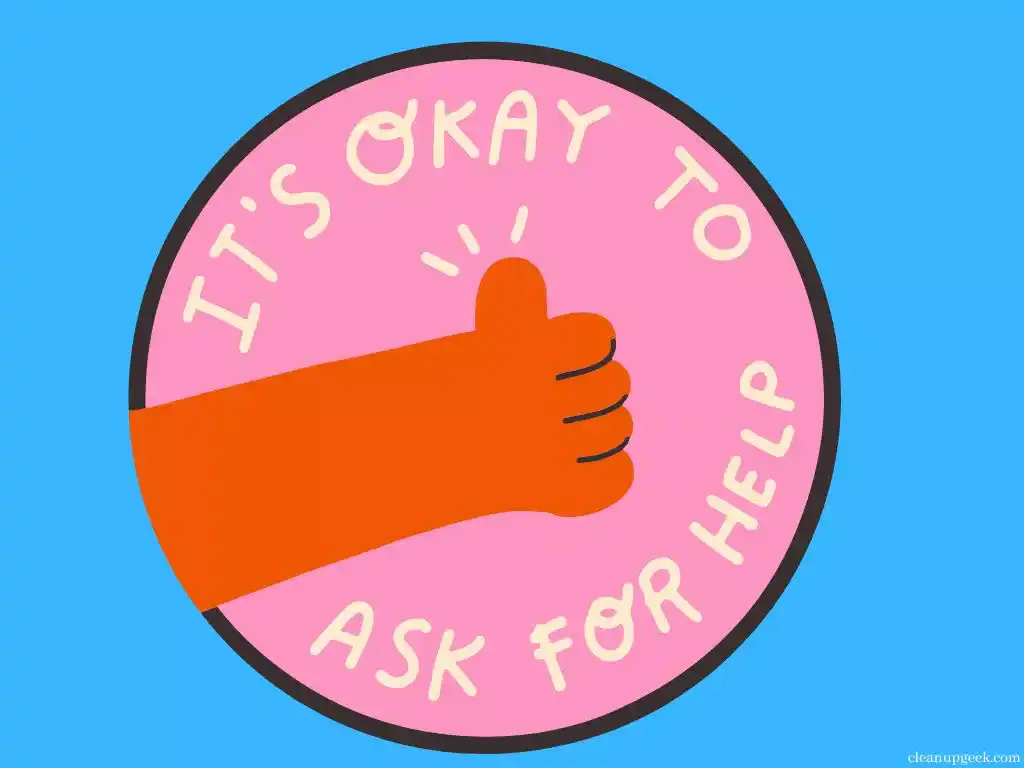
Setting realistic expectations for yourself is essential when keeping your house clean with ADHD. However, it doesn’t mean that you have to do everything on your own. Group efforts can make a big difference in maintaining order in your home.
You don’t need to do all the cleaning yourself; instead, ask for help from family and friends. Outside assistance from professional cleaners can also be a game-changer. If you struggle with specific tasks like deep cleaning or organizing, investing in outside assistance can alleviate some of the stress and frustration that come with managing a messy home. With their expertise, they can tackle tasks that might take you hours to complete.
Chore delegation and shared responsibilities are also crucial when trying to keep your home tidy. Team cleaning is an effective way to break down larger tasks into smaller ones and assign them to different members of the household. This approach ensures that no one person is responsible for everything and helps everyone feel like they’re making a meaningful contribution.
By incorporating these group efforts, outside assistance, chore delegation, shared responsibilities, and team cleaning strategies into your cleaning routine, you’ll find it easier to manage your ADHD symptoms while keeping your space clean and organized.
Next up, let’s explore how investing in organizational tools can help streamline this process even further!
10. Invest In Organizational Tools
One of the biggest challenges for people with ADHD is keeping their living space clean and organized. Luckily, there are many space-saving options and decorative storage solutions available to help you keep your home tidy.
By investing in organizational tools, you can reduce clutter, improve productivity, and create a more calming environment.
Digital organization is one budget-friendly solution that can be particularly helpful for people with ADHD. There are many apps and tools available that can help you manage your time more effectively, keep track of appointments and deadlines, and stay on top of household tasks. Whether you prefer a simple to-do list or a more complex scheduling system, there are digital tools out there to suit your needs.
Decorative storage solutions are another great way to keep your home looking neat while also adding some personality to your space. From colorful baskets and bins to stylish shelving units, there are countless ways to incorporate storage into your decor. By choosing storage solutions that reflect your personal style, you’ll be more likely to use them consistently and keep clutter at bay.
By investing in organizational tools like digital apps, decorative storage solutions, and time management strategies, you can make house cleaning much easier if you have ADHD. These budget-friendly options will help you stay on top of household tasks while also creating a more welcoming environment in your home.
In the next section, we’ll discuss how to utilize storage solutions effectively without sacrificing style or functionality.
11. Utilize Storage Solutions
Maximizing space is key to keeping your home clean and organized, especially when you have ADHD. One way to do this is by utilizing creative containers. Look for containers that can be stacked or nested, and choose ones that are clear so you can easily see what’s inside. This will not only help you save space but also make it easier to find what you need.
Another great option for maximizing space is hidden storage. This includes things like under-bed storage boxes or ottomans with built-in storage compartments. You can also use DIY solutions like pegboards or floating shelves to create additional storage space on walls or in closets. By taking advantage of these types of hidden storage options, you’ll be able to keep your home clutter-free without sacrificing valuable floor space.
Space optimization is all about finding ways to use the space you have more efficiently. Don’t be afraid to get creative with your organization strategies and think outside the box when it comes to finding storage solutions. With a little bit of effort and some smart planning, you’ll be able to keep your home neat and tidy even with ADHD.
As we move on to reducing clutter, remember that utilizing storage solutions is just one step in the process. It’s important to stay mindful of what items you actually need and use on a regular basis so you don’t end up accumulating unnecessary items again.
With that in mind, let’s explore some helpful tips for reducing clutter in your home.
12. Reduce Clutter

After utilizing storage solutions, you might realize that you still have too much stuff lying around. It’s time to face the music and declutter your home. This might seem like a daunting task, especially for those with ADHD who struggle with decision-making and letting go of items.
But fear not, there are many decluttering tips out there that can help make the process easier. One approach is to embrace minimalist living. This doesn’t mean you have to live in an empty space with only a chair and a table, but rather it’s about simplifying your spaces and getting rid of things you don’t need or love.
Start by identifying areas in your home that tend to collect clutter, such as your kitchen counters or closet floors. Then, go through each item and ask yourself if it serves a purpose or brings you joy. If not, it’s time to say goodbye. Don’t let the thought of organizing overwhelm you either – there are plenty of organizing hacks and tidying techniques out there too.
One popular method is Marie Kondo’s KonMari method which encourages people to keep only items that ‘spark joy’ and to organize them by category rather than location. Another approach is the ‘one in, one out’ rule where for every new item brought into the home, one must be donated or thrown away. Simplifying your spaces can not only make cleaning easier but also create a more calming environment for those with ADHD.
By reducing clutter and simplifying your spaces, you’ll find that keeping your house clean becomes much easier. But another important aspect is implementing the mindset of ‘clean as you go’. This means taking small steps throughout the day such as putting dishes straight into the dishwasher after using them or wiping down surfaces after cooking. Don’t wait until things pile up – incorporating this habit into your daily routine will make cleaning feel less overwhelming and more manageable in the long run.
13. Clean As You Go
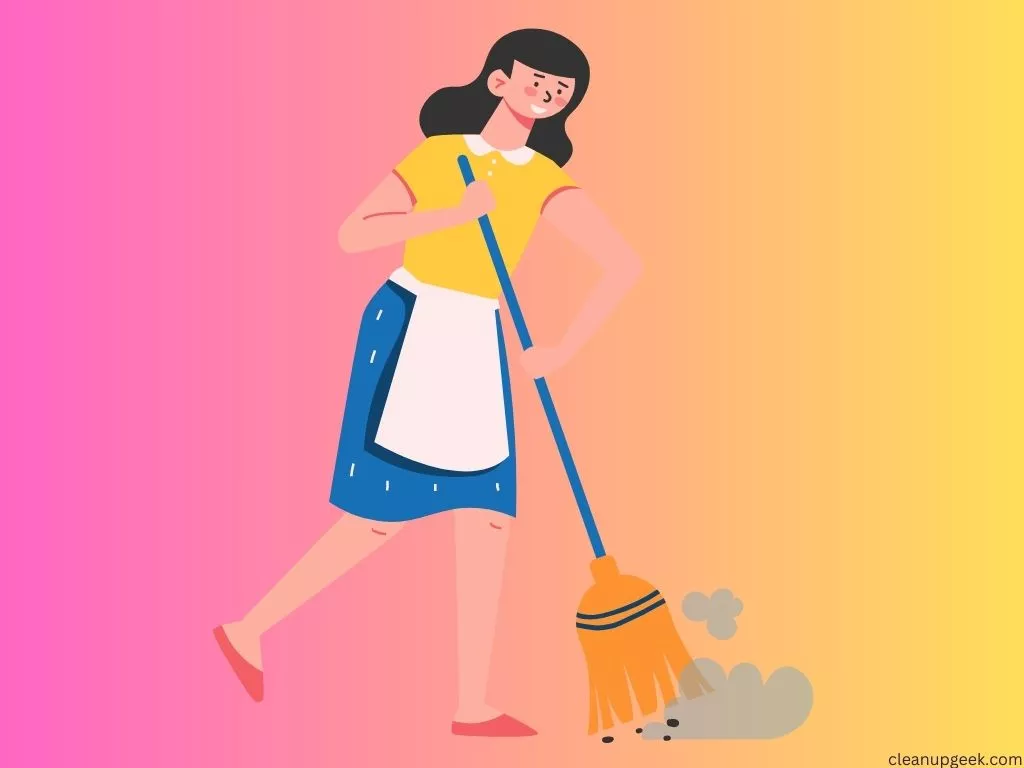
Consistency in cleaning is key when you have ADHD. One way to maintain a clean house is to clean as you go. This means tidying up after yourself as you move through your day.
The benefits of this approach are numerous. For one, it’s easier to clean up small messes than big ones. Cleaning as you go also helps prevent clutter from accumulating and reduces the amount of time needed for deep cleaning sessions later on.
Here are some tips for incorporating this strategy into your daily routine:
- Put things away immediately after using them
- Wipe down surfaces after use
- Do a quick sweep or vacuum every day.
Remember the importance of consistency in maintaining a clean home with ADHD. By making these small changes, you can stay on top of messes and keep your space tidy without feeling overwhelmed.
14. Use Multitasking Strategies

Managing your time effectively is key when it comes to keeping your house clean with ADHD. By prioritizing tasks, you can ensure that the most important things get done first. One good way to prioritize is to make a list of all the tasks that need to be done and then order them based on importance. You can then work through the list in order, crossing off each task as you complete it.
Multitasking techniques can also be helpful when trying to keep your house clean with ADHD. For example, you could try doing two or more tasks at once, such as folding laundry while watching TV or cleaning the kitchen while cooking dinner. However, it’s important to be careful not to take on too much at once, as this can lead to overwhelm and burnout.
Staying focused and minimizing distractions is also essential for keeping your house clean with ADHD. To stay focused, try breaking down larger tasks into smaller ones and setting achievable goals for yourself. Additionally, minimizing distractions by turning off your phone or closing unnecessary tabs on your computer can help you stay on track and get things done more efficiently. By using these strategies, you’ll be better equipped to tackle cleaning tasks around your home.
Now that we’ve discussed some ways to manage your time and stay focused while cleaning with ADHD, it’s time to talk about focusing on one room at a time. This strategy can be particularly helpful if you tend to feel overwhelmed by larger cleaning projects. By focusing on one room at a time, you can break down the task into more manageable pieces and see progress more quickly.
15. Focus On One Room At A Time
As someone with ADHD, focusing on cleaning an entire house can be overwhelming. Instead, try breaking it down into one room at a time. Symbolize each room as a separate entity with its own unique needs and purpose.
Start with the room that is causing the most stress and work your way from there. Room Rotation: Once you have cleaned one room, move on to the next until all rooms are clean. This will prevent feeling overwhelmed and gives a sense of accomplishment.
Distraction Techniques: If you find yourself getting distracted or bored during cleaning, try using distraction techniques such as setting a timer for 15 minutes or taking breaks to do something enjoyable in between cleaning tasks.
Cleaning Soundtrack: Create a playlist of upbeat music that motivates you to clean and play it while cleaning each room.
Mindful cleaning is also important when focusing on one room at a time. Take the time to pay attention to what needs to be cleaned in each specific space and give it your full attention before moving on to the next area.
Decluttering tips such as removing anything unnecessary or unused from each room can also help make the process feel less daunting.
Incorporating these techniques into your cleaning routine can help alleviate stress and make cleaning more manageable for those with ADHD. Next step? Use positive reinforcement to keep up the good work!
16. Use Positive Reinforcement

One powerful tool for keeping your house clean with ADHD is positive reinforcement. Behavioral therapy has shown that rewarding yourself for good behavior can help you repeat it in the future. Positive reinforcement techniques can be as simple as giving yourself a pat on the back or treating yourself to something you enjoy after completing a task.
To make positive reinforcement even more effective, try incorporating daily affirmations into your routine. These are short statements that affirm positive qualities about yourself and your abilities. For example, “I am capable of keeping my home clean and organized.” By repeating these affirmations regularly, you can train your brain to believe in your ability to maintain a clean living space.
Another helpful practice is mindfulness exercises. These can be as simple as taking a few deep breaths or focusing on the present moment while doing a mundane task like washing dishes. By practicing mindfulness, you can become more aware of your surroundings and better able to focus on the task at hand. Self-reflection practices such as journaling or meditation can also help you stay on track with cleaning and organization goals by allowing you to identify obstacles and brainstorm solutions.
Incorporating positive reinforcement, daily affirmations, mindfulness exercises, and self-reflection practices into your routine can make all the difference when it comes to keeping your house clean with ADHD. So don’t forget to celebrate small victories along the way – each time you complete a task or stick to a routine, take a moment to acknowledge your accomplishment before moving on to the next challenge.
17. Celebrate Small Victories

As someone with ADHD, it can be easy to get discouraged when trying to keep a clean house. However, it’s important to celebrate small victories along the way. By acknowledging and appreciating even the smallest steps you take towards a cleaner home, you can boost your mental health and motivate yourself to keep going.
One way to practice gratitude and mindfulness while cleaning is by focusing on the present moment. Instead of letting your mind wander or getting overwhelmed by the task at hand, try using mindfulness techniques like deep breathing or body scanning. By staying present at the moment, you may find that cleaning feels less like a chore and more like an opportunity for self-care.
It’s also important to practice self-compassion throughout the cleaning process. Don’t beat yourself up if you don’t achieve everything you set out to do in one day. Remember that progress is better than perfection, and every small victory counts towards your overall goal of keeping a clean house.
- Take breaks when needed
- Use positive affirmations
- Ask for help if necessary
Rewarding yourself for making progress can be an excellent motivator. Whether it’s treating yourself to a favorite snack or indulging in some relaxing self-care time after completing a cleaning task, finding ways to reward yourself for small victories can help make the process feel more manageable and enjoyable.
18. Reward Yourself
Let’s say you’ve made an effort to keep your house clean and tidy for a week. You’ve followed some of the tips we’ve mentioned, and you’re beginning to see progress. Now what? How do you stay motivated to continue this new habit? Incentive ideas are a great way to keep yourself on track.
One self-motivation tip is to create a reward system for yourself. Positive reinforcement strategies work wonders for those with ADHD. For example, set small goals for yourself each day or week, and when you achieve them, treat yourself to something you enjoy. This could be as simple as watching an episode of your favorite show or buying yourself a special snack.
Celebrating progress is another way to stay motivated. Make a list of milestones that you want to achieve in terms of keeping your house clean, such as decluttering your closet or completing the laundry. When you reach one of these milestones, take time to celebrate your achievement. This can be as simple as giving yourself a high-five or doing a happy dance.
Remember that progress takes time, but acknowledging what you’ve accomplished so far will help keep you motivated for the long haul.
Now that we’ve discussed incentive ideas and positive reinforcement strategies, it’s important not to procrastinate when it comes to cleaning your house. It’s easy to fall into old habits and let clutter accumulate once again. In the next section, we’ll discuss ways to avoid procrastination and maintain the momentum toward keeping your home clean and organized.
19. Don’t Procrastinate
Overcoming procrastination is a key factor in keeping your house clean with ADHD. It can be challenging to stay motivated and on task when distractions abound, but there are time management techniques that can help.
One effective strategy is to break tasks down into smaller, more manageable steps. This makes them less daunting and easier to complete.
Another helpful technique is to practice mindfulness while cleaning. This means staying present in the moment and focusing on the task at hand, rather than allowing your mind to wander.
Setting achievable goals for each cleaning session can also help you stay on track and feel accomplished.
Accountability partners can also be a powerful tool for overcoming procrastination. Sharing your goals with a trusted friend or family member who can check in on your progress can provide the motivation you need to stay focused and committed.
By implementing these strategies, you can overcome procrastination and keep your house clean despite the challenges of ADHD.
Remember, it’s important to seek professional help if needed. There’s no shame in asking for assistance from a therapist or medical professional who specializes in ADHD management.
With their guidance, you can develop personalized strategies for managing symptoms that will make it easier to keep your home clean and organized.
20. Seek Professional Help If Needed
Don’t wait until it’s too late to seek help managing your ADHD symptoms. Procrastination can hinder your progress and leave you feeling overwhelmed. However, it’s never too late to take the first step towards improving your quality of life.
The benefits of therapy are numerous for those with ADHD, including learning coping strategies, improving self-esteem and relationships, and reducing symptoms like impulsivity and distractibility. Finding the right therapist is essential for a positive therapeutic experience. It’s important to choose someone who specializes in treating ADHD or has experience working with individuals who have similar challenges to yours.
There are different types of therapy available – cognitive-behavioral therapy (CBT), dialectical behavior therapy (DBT), and mindfulness-based therapies – that can be effective in managing your symptoms. The cost of therapy varies depending on where you live and what type of therapist you choose. Don’t let the cost deter you from seeking help; there are often community resources available for those who need financial assistance. Overcoming stigma may also be a concern, but remember that seeking help is a sign of strength rather than weakness.
Seeking professional help can be an excellent way to improve your quality of life with ADHD, but it’s not the only way. In addition to therapy, practicing self-care can also have a significant impact on how you manage your symptoms day-to-day.
21. Practice Self-Care

Self-care is crucial when it comes to managing ADHD symptoms and keeping your house clean. Here are some self-care tips that can help you stay on track:
Firstly, incorporate mindfulness practices into your daily routine. This can include meditation, yoga, or simply taking a few deep breaths before starting a task. Mindfulness helps you stay present and focused, which can improve productivity and reduce stress.
Secondly, prioritize stress management by finding activities that help you relax. This could be anything from going for a walk to listening to calming music. When you feel overwhelmed or anxious, take a break and do something that helps you unwind.
Thirdly, establish healthy habits that support your mental health. This includes getting enough sleep, eating nutritious foods, and staying hydrated. Taking care of your physical needs can significantly impact your ability to manage ADHD symptoms and keep your home clean.
Remember to make time for yourself throughout the day to practice these self-care tips. By prioritizing your mental health and well-being, you’ll have more energy and motivation to tackle household chores.
Next up: Time management strategies to help you stay motivated!
22. Stay Motivated
Have you ever found yourself staring at a messy room, feeling overwhelmed and lacking the motivation to clean it up? This is a common experience for individuals with ADHD. However, finding motivation is key to keeping your house clean. One way to do this is by setting achievable goals. Start small, such as committing to cleaning one room or even just one area of a room each day. As you accomplish these goals, increase the difficulty gradually.
Staying focused can be challenging for those with ADHD, but building routines can help. Create a daily schedule that includes time for cleaning and stick to it as much as possible. Additionally, try breaking down tasks into smaller steps and focusing on completing each step before moving on to the next one. This can help prevent distractions from derailing your progress.
To further avoid distractions, consider creating a designated cleaning space or zone in your home where you keep all of your cleaning supplies and tools organized and easily accessible. This eliminates the need to search for items when it’s time to clean and reduces the likelihood of getting sidetracked by other tasks or activities.
| Finding Motivation | Staying Focused | Setting Goals |
|---|---|---|
| • Break tasks into manageable steps | • Minimize distractions by establishing routines | • Set achievable goals |
| • Use positive self-talk and reward yourself for accomplishments | • Use timers or alarms to stay on task | • Prioritize tasks based on importance |
| • Visualize the end result of having a clean house | • Take breaks when needed to avoid burnout | • Focus on progress rather than perfection |
Remember, embracing imperfection is also important in maintaining motivation when keeping your house clean with ADHD. It’s okay if things aren’t always perfect – what matters most is that you’re making progress toward your goals and taking steps toward building good habits. So go ahead, take a deep breath, and tackle that messy room one step at a time.
23. Embrace Imperfection

Now that we’ve talked about staying motivated, let’s move on to the idea of embracing imperfection in your cleaning routines. This may seem counterintuitive, but it can actually be incredibly helpful for those with ADHD who tend to struggle with perfectionism.
By accepting that your home may not always be perfectly clean, you can free yourself from the pressure to constantly maintain an impossible standard. One benefit of embracing imperfection is that it allows you to focus on what truly matters when it comes to cleaning. Instead of getting bogged down in small details, you can prioritize tasks based on their level of importance and tackle them accordingly.
This can help prevent overwhelm and allow you to better manage your time and energy. Of course, overcoming the need for perfection can be easier said than done. But with some strategies and a healthy dose of self-compassion, it is possible.
Some ideas for accepting imperfection include setting realistic expectations, breaking tasks into smaller steps, and acknowledging progress rather than focusing only on what still needs to be done. Remember, progress is better than perfection!
Conclusion and final thoughts 💭
In conclusion, keeping your house clean with ADHD may seem like an impossible task, but it can be done. With the right strategies and mindset, you can conquer the clutter and create a space that brings you peace and clarity.
So don’t let ADHD hold you back from having a clean home!
By implementing these tips, you’ll be on your way to becoming a cleaning master in no time. And who knows, maybe one day you’ll even be known as the Marie Kondo of ADHD households.
So roll up your sleeves, put on some music, and get to cleaning – your organized oasis awaits!

